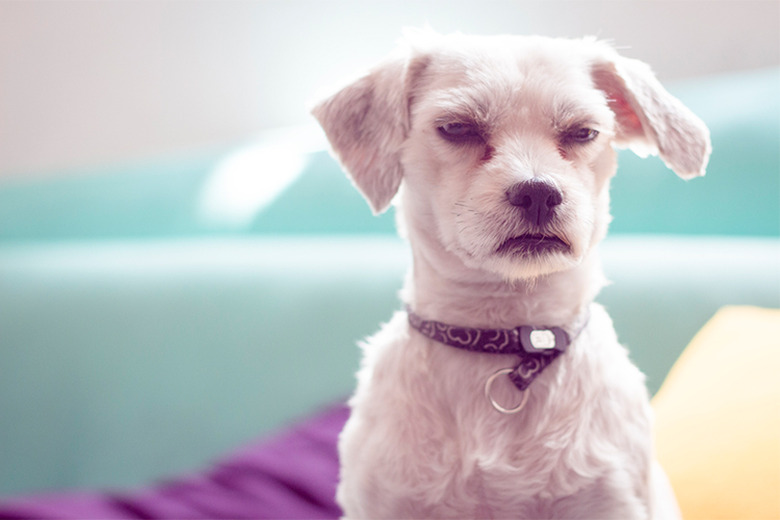My Dog Keeps Growling At One Specific Person
When a dog growls at one family member or the dog barks at one specific person, these are stress growls indicating his fear or mistrust of that person. He may have had a negative interaction with that person, or the person's scent or looks remind the dog of someone else. Whatever the reason, it is possible to train dogs to trust the person using specific positive actions.
Consider the dog's background
Consider the dog's background
If you adopted your dog or you were away for a time, think about what may have occurred when you were not together. This person or someone similar may have abused or negatively disciplined the dog, and the dog is now fearful of this happening again. Before accusing your family member or friend, understand that the person may only remind the dog of the actual culprit.
Dogs are sensitive to scent
Dogs are sensitive to scent
If you've ever smelled something that brought back memories, even from long ago, imagine how dogs experience this when their sense of smell is thousands of times stronger than ours. Every person has a scent, from the pheromones given off to the soap used. So, the person at whom the dog growls may have the same or a similar scent by using the same soap or wearing the same perfume, for example, as someone who had negative interactions with the dog in the past.
Think about hats, beards, and canes
Think about hats, beards, and canes
If your dog growls at one family member or one specific person, it could be something as simple as the baseball cap or beret the person wears because someone in the dog's past wore the same type of hat. Asking the person to remove the hat may be the simple solution. Similarly, if you're seeing your dog growling at a familiar person, consider what that person is doing differently now or how his looks have changed.
Using the same logic, if the person has a beard, perhaps the dog had negative experiences with a bearded person, or it could just be that the dog isn't used to people with beards, and it frightens her. Asking someone to remove a beard may be a bit extreme, so instead, work on getting the dog comfortable with the person in spite of the beard.
Maybe the dog is afraid of the person's cane or walker, either due to past experiences or just because she's unfamiliar., especially if the dog knew the person before he started using it. Clearly, the person can't stop using the mobility aid, but once seated, he can put these aids aside and interact positively with the dog.
The special case of children
The special case of children
If your dog is growling at a child or teen, move the child away from the dog, trying not to startle and further scare the dog. Dogs are often afraid or uncertain of children because they are unpredictable, they may have acted inappropriately with him in the past, or another child made the dog fearful of children in general.
Teach the child appropriate ways to interact with dogs. This includes never pulling on the dog's fur or tail, of course, but also standing quietly when near the dog instead of running. Show the child how and where to pet the dog but stress that this is only for your dog, not for strange dogs. Teach the child to always ask the dog's owner before petting or approaching an unfamiliar dog.
How to approach a growling dog
How to approach a growling dog
It's important to know how to approach a growling dog, even your own dog, because any growling dog may bite if provoked. People look big to most dogs, and men, who are often taller and huskier than women, can loom especially large in a dog's eyes. Show the person how to crouch down to be more on the same level, remove or put down anything unusual, and extend open palms without reaching for the dog and allow the dog to come to the person.
Positive actions overcome fear and mistrust
Positive actions overcome fear and mistrust
Never punish a dog for growling. If dogs aren't allowed to give their warning growl, they may go right to biting when they are afraid of someone. Instead, show the dog that this is a safe person by arranging occasions for the person to play with the dog, offer treats, and handle the dog's care, like feeding or going for walks. Supervise so that you're sure the person is acting in positive ways. With multiple one-on-one sessions, the dog will become accustomed to what makes this person different.
